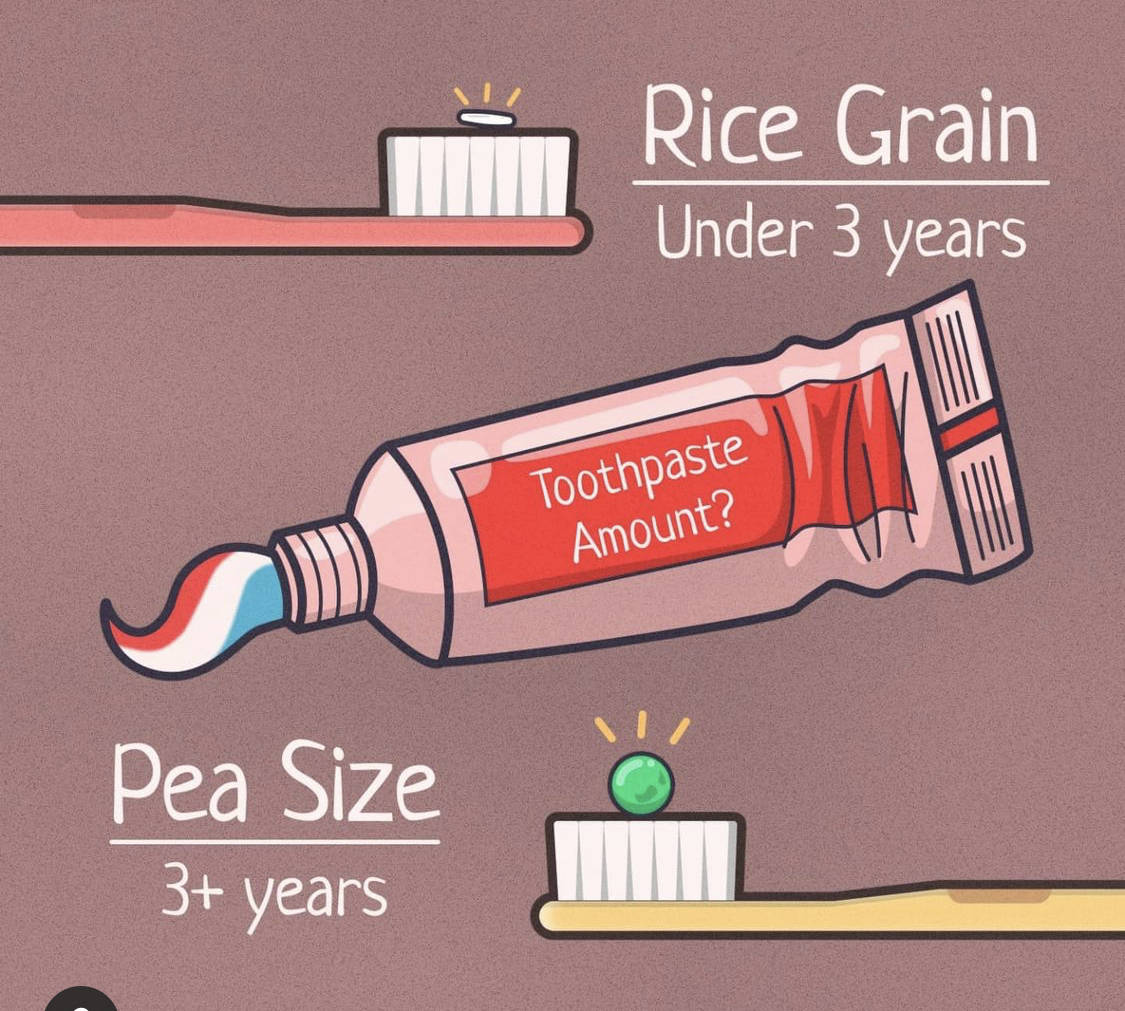
Introduction
Fluoride toothpaste can help protect your child’s teeth from cavities when used in proper amounts and in direct supervision of a parent or adult. The fluoride can help remineralize enamel (reverse even small starts of a cavity) and prevent decay. But in a recent study, CDC estimated nearly 40% of children aged 3–6 years were using too much toothpaste. Fluoride when used topically on the enamel is very beneficial however, when fluoride is inadvertently ingested, the excess fluoride can be incorporated into developing permanent teeth and cause fluorosis or brownish white spots on the developing teeth.
As a pediatric dentist, Dr. Monica Sharma, recommends that parents brush their infants, toddlers and children with fluoride toothpaste starting at a young age however with adult supervision and in very small controlled amounts. She teaches parents about the recommended amounts to use based on age and appropriate method of brushing.
So how much toothpaste is enough?
If your child is under 3, only a rice grain size amount is recommended. Fluoride is great topically for our teeth however to prevent swallowing or ingesting, she asks parents use a small hand towel to wipe out any excess paste before the child has a chance to swallow. The remnants of fluoride from the paste on their teeth may then continue to help the enamel throughout the night.
If your child is over 3 years, you can use a pea size amount. It’s best to have your child spit out the remaining paste after brushing or continue to wipe out with a small hand towel if they are unable to spit.
By age 6, the swallowing reflex has developed sufficiently to prevent inadvertent ingestion and the risk for ingesting excess fluoride is much less.
Why is it important to follow the recommended amount?
The fluoride in toothpaste is meant to protect the tooth topically, or contact and coat the outer surfaces of your child’s teeth which are already present in the mouth. It strengthens tooth enamel, protects from the demineralizing actions of acid breakdown, and has even been shown to exhibit remineralizing properties on small areas starting to decay (can reverse a small cavity in its early stages of formation). Some toothpastes also contain other ingredients like triclosan, which kills bacteria and prevents plaque build-up.
Brushing with too much fluoride toothpaste can lead to inadvertent ingesting of fluoride which can then get incorporated into and affect the permanent teeth which are forming under the gums. This shows up as white, brownish yellow discolorations or spots on the developing permanent teeth when they come in. This is known as dental fluorosis . Most of these spots are permanent and although they may change in appearance over time, they are developmental and not on the surface. If your child has fluorotic spots on his or her teeth, Dr. Monica can discuss some conservative treatment options such as ICON to help make them less apparent and even disappear.
Conclusion:
A cavity free mouth starts with using a small amount of topical fluoride toothpaste. Remember to use a rice grain amount for your child under 3 and pea size amount if over 3. And, always remember to brush your child’s teeth twice a day for 2 minutes each.
